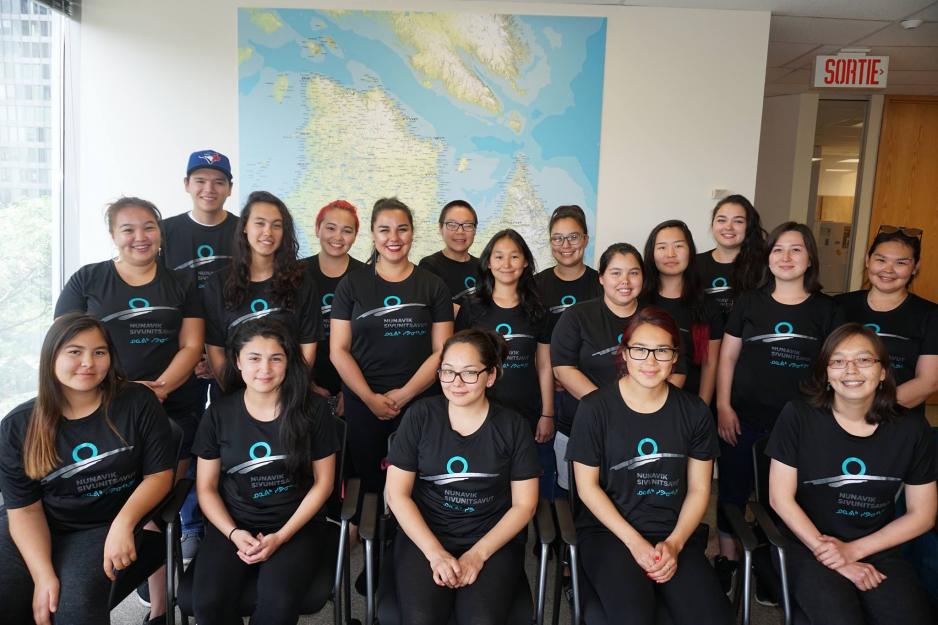New Schooling Experience for Nunavik’s Youth

Students from Nunavut have long had the opportunity to engage in the post-secondary schooling experience
Nunavut Sivuniksavut. However, now students from Nunavik (Northern Quebec) also have an opportunity to pursue culturally appropriate education in Montreal focusing on their own unique history.
After many years of planning, Nunavik Sivunitsavut opened its doors for the first time in Montreal this fall. This post-secondary schooling experience offers students a unique one-year experience where they will be able to learn about the culture and history of northern Quebec.
James Vandenberg, the Education Consultant for Nunavik Sivunitsavut, says to High North News: "Nunavik Sivunitsavut offers courses on Inuit and circumpolar history, politics, governance, culture and language. Students will gain invaluable insight into our region, its culture and people."
Nunavik Sivunitsavut is focused on providing Nunavimmiut (people from Nunavik) "a chance to have a positive urban experience that will prepare them for study at any of the institutions of higher learning in the province", explains Mr. Vandenberg. The students' courses are accredited by John Abbot College in order to ensure that the students’ work can be used towards acquiring a college degree.
Nunavik - an Arctic region
Many people across the world are unfamiliar with the nuances of Nunavik as a region and its relationship both to Canada and the Arctic. Nunavik constitutes the northern third of Quebec, it is considered the Arctic region of the province and it is mainly inhabited by Inuit. Nunavik is one of the four regions of Inuit Nunangat (Inuit indigenous people); the other three are Nunatsiavut, Nunavut and Inuvialuit.
The Nunavik territory is larger than the state of California and has fourteen villages, the largest of which is Kuujjuaq with approximately 2,300 people. The James Bay and Northern Quebec Land Claims Agreement, which was signed in 1975, is one of the first modern treaties signed in Canada and has lasting impacts for the governance of the region. This history and relationship is one of the reasons why Nunavik Sivunitsavut is such an important development for the region.
There are many similarities between the Inuit living in Nunavut and those living in Nunavik, but there are also important differences and these are part of the curriculum. As Mr. Vandenberg commented when asked about the similarities between Nunavut Sivuniksavut and Nunavik Sivunitsavut:
"The concept is similar. However, Nunavik and Nunavut differ significantly in terms of language, history, politics and governance.” He added that “there is no official affiliation between the two organizations. Nunavut Sivuniksavut has acted as an inspiration for the goals of Nunavik Sivunitsavut."
Sees a lot of potential
The first year has been a success so far, Mr. Vandenberg assures. "The program is allowing [the students] to explore their history along other students who they can relate to, students who come from similar communities and culture background. They are here supporting each other and are all eager to continue learning and growing. There is so much potential in each of them and it's only been a month!"
There have been challenges already, however, nothing unexpected. As Mr. Vandenberg commented: "Of course moving to a new city, way from your family and friends can be challenging. But that’s expected for anyone moving away from home."
Needs long-term funding
The funding for the program comes from various organizations and is not locked in for the longer term. According to Mr. Vandenberg, regional partners have provided $350,000 CDN to help with the development stages as well as "earmarking $240,000 for the first year of operations."
The federal government has also provided $666,921 through a grant from the Indigenous and Northern Affairs (INAC) ministry, however, again this is for the development and first year of the project. And, finally, the Ministry of Higher Education of Quebec has committed to $109,000 for the first year. Mr. Vandenberg adds: "We are currently looking at options for long-term sustainable funding and are very optimistic about the future of Nunavik Sivunitsavut."
What does the future look like?
The long-term planning for the program is still in the works, Mr. Vandenberg assures.
"We are currently working on our 5-year plan. We’d like to be able to accept more students, start a division of the program in the communities and work on securing more funding for the next 20 years." Furthermore, he added, "We would like to continue operating the current project as the general education centre in Montreal and develop two full-diploma programs for which the majority of the courses would be delivered in Nunavik, and in Inuktitut." He ended on the note: "We see the current initiative as one of the first steps on the road to the repatriation of higher learning to Nunavik."
Education in the northern regions of Canada is challenging for many reasons, including its being very remote, lack of internet, and cultural differences. Canada is the only Arctic nation that does not have a university in its northern region.
The creation of Nunavut Sivuniksavut is one step in the direction of ensuring improved higher education, Nunavik Sivunitsavut another one. But as Mr. Vandenberg commented: "The ideal would be to have a place where Inuit from all regions could study together, located in Inuit Nunangat."
